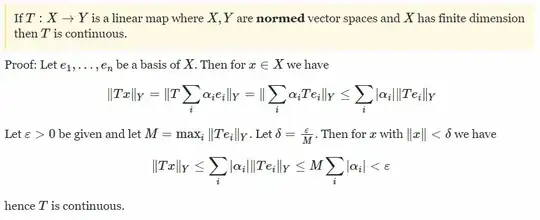On another post a user asked for a proof that if a map is linear then it is continuous. "Every linear mapping on a finite dimensional space is continuous"
I have pasted an image of the answer which I am having trouble understanding. In the last line he replaces $\sum_i \lvert \alpha_i\rvert$ with $|x|$, so it must either be equal or less for the conclusion to follow.
Question Why is this sum of scalars equal or less than the norm?
Thanks
